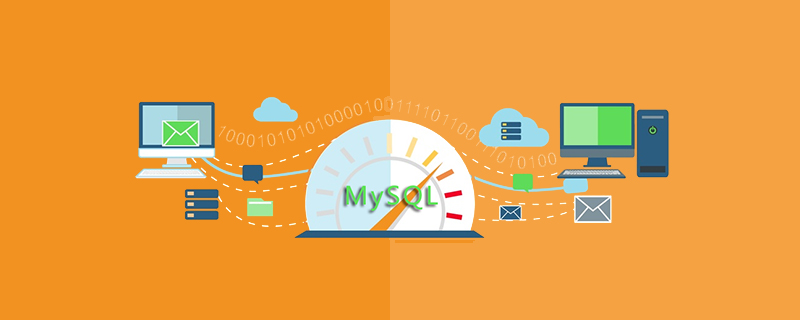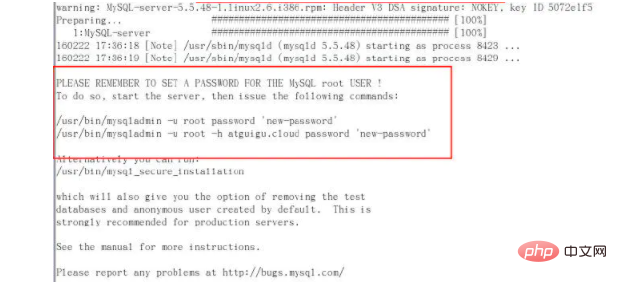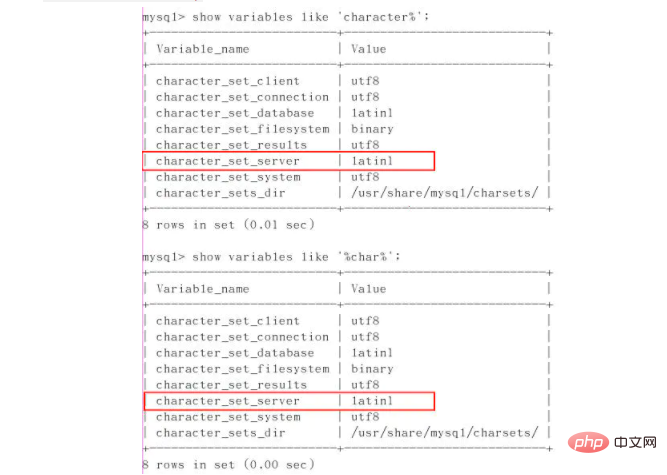MySQL Advanced Knowledge Architecture Introduction
mysql video tutorialThe column introduces the structure of MySQL advanced knowledge

Recommended (free): mysql video tutorial
1. Introduction to MySQL
Overview
MySQL is a relational database management system developed by the Swedish MySQL AB company and currently belongs to Oracle.
MySQL is a relational database management system that stores data in different tables instead of putting all data in one big warehouse, which increases speed and improves flexibility.
Mysql is open source, so you don’t need to pay extra.
Mysql supports large databases. Can handle large databases with tens of millions of records.
MySQL uses the standard SQL data language form.
Mysql can be used on multiple systems and supports multiple languages. These programming languages include C, C, Python, Java, Perl, PHP, Eiffel, Ruby and Tcl, etc.
Mysql has good support for PHP, which is currently the most popular web development language.
MySQL supports large databases and data warehouses with 50 million records. The 32-bit system table file can support a maximum of 4GB, and the 64-bit system supports a maximum table file of 8TB.
Mysql can be customized and adopts the GPL protocol. You can modify the source code to develop your own Mysql system.
Advanced MySQL involves knowledge
- mysql kernel
- sql optimization siege lion
- mysql server optimization
- Various parameter constant settings
- Query statement optimization
- Master-slave replication
- Software and hardware upgrade
- Disaster recovery backup
- sql programming
Complete mysql optimization requires a deep foundation. Large companies even have dedicated DBAs to write the above
2. Installation of MySQL Linux version
- This time I installed MySQL 5.5, and the installation environment is CentOS 6.5
- version download address official website download address
- DownloadMySQL-Client and MySQL-Server
- http://downloads.skysql.com/archives/mysql-5.5/MySQL-server-5.5 .16-1.rhel4.i386.rpm
- http://downloads.skysql.com/archives/mysql-5.5/MySQL-client-5.5.16-1.rhel4.i386.rpm
- http://downloads.skysql.com/archives/mysql-5.5/MySQL-devel-5.5.16-1.rhel4.i386.rpm
- Check whether the current system Installed MySQL
- Query command:
rpm -qa|grep -i mysql - Delete command:
rpm -e --nodeps RPM package full name
- Query command:
- Install mysql server (Pay attention to the tips)


Set password Tip
- Install mysql client
- View the mysql user and mysql group created during MySQL installation
# cat /etc /passwd | grep mysqlcat /etc/group | grep mysql
- Starting and stopping the mysql service
- View MySQL start and stop status:
# ps -ef | grep mysql - Start and stop operations:
# /etc/init.d/mysql start# /etc/init.d/mysql stop- or
#service mysql start#service mysql stop
- Set MySQL self-starting service
-
#chkconfig mysql onSet automatic startup -
# chkconfig --list | grep mysqlCheck whether automatic startup is set up
-
- Modify the configuration file location
- Copy the current 5.5 version:
cp /usr/share/mysql/my-huge.cnf /etc/my.cnf -
5.6 version
cp /usr/share/mysql/my-default.cnf /etc/my.cnf
- Copy the current 5.5 version:
- Modify character set and data storage path
- View characters Set
show variables like 'character%';show variables like '%char%';-

- View characters Set
- View MySQL start and stop status:

- #character set
- The default is that both the client and the server use latin1, so the characters will be garbled.
- Modify the character set and modify the previously copied configuration file. (Detailed follow-up code)
- MySQL installation location
- View the installation directory under linux
ps -ef|grep mysql
- View the installation directory under linux
| Path | Explanation | Remarks |
|---|---|---|
| Mysql database file storage path | /var/lib/mysql/atguigu.cloud.pid | |
| Configuration file directory | mysql.server command and configuration file | |
| Related command directory | mysqladmin mysqldump and other commands | |
| Start and stop related scripts |
The above is the detailed content of MySQL Advanced Knowledge Architecture Introduction. For more information, please follow other related articles on the PHP Chinese website!

Hot AI Tools

Undresser.AI Undress
AI-powered app for creating realistic nude photos

AI Clothes Remover
Online AI tool for removing clothes from photos.

Undress AI Tool
Undress images for free

Clothoff.io
AI clothes remover

Video Face Swap
Swap faces in any video effortlessly with our completely free AI face swap tool!

Hot Article

Hot Tools

Notepad++7.3.1
Easy-to-use and free code editor

SublimeText3 Chinese version
Chinese version, very easy to use

Zend Studio 13.0.1
Powerful PHP integrated development environment

Dreamweaver CS6
Visual web development tools

SublimeText3 Mac version
God-level code editing software (SublimeText3)

Hot Topics
 1664
1664
 14
14
 1423
1423
 52
52
 1318
1318
 25
25
 1268
1268
 29
29
 1248
1248
 24
24
 Linux Architecture: Unveiling the 5 Basic Components
Apr 20, 2025 am 12:04 AM
Linux Architecture: Unveiling the 5 Basic Components
Apr 20, 2025 am 12:04 AM
The five basic components of the Linux system are: 1. Kernel, 2. System library, 3. System utilities, 4. Graphical user interface, 5. Applications. The kernel manages hardware resources, the system library provides precompiled functions, system utilities are used for system management, the GUI provides visual interaction, and applications use these components to implement functions.
 Laravel Introduction Example
Apr 18, 2025 pm 12:45 PM
Laravel Introduction Example
Apr 18, 2025 pm 12:45 PM
Laravel is a PHP framework for easy building of web applications. It provides a range of powerful features including: Installation: Install the Laravel CLI globally with Composer and create applications in the project directory. Routing: Define the relationship between the URL and the handler in routes/web.php. View: Create a view in resources/views to render the application's interface. Database Integration: Provides out-of-the-box integration with databases such as MySQL and uses migration to create and modify tables. Model and Controller: The model represents the database entity and the controller processes HTTP requests.
 MySQL and phpMyAdmin: Core Features and Functions
Apr 22, 2025 am 12:12 AM
MySQL and phpMyAdmin: Core Features and Functions
Apr 22, 2025 am 12:12 AM
MySQL and phpMyAdmin are powerful database management tools. 1) MySQL is used to create databases and tables, and to execute DML and SQL queries. 2) phpMyAdmin provides an intuitive interface for database management, table structure management, data operations and user permission management.
 MySQL vs. Other Programming Languages: A Comparison
Apr 19, 2025 am 12:22 AM
MySQL vs. Other Programming Languages: A Comparison
Apr 19, 2025 am 12:22 AM
Compared with other programming languages, MySQL is mainly used to store and manage data, while other languages such as Python, Java, and C are used for logical processing and application development. MySQL is known for its high performance, scalability and cross-platform support, suitable for data management needs, while other languages have advantages in their respective fields such as data analytics, enterprise applications, and system programming.
 Solve database connection problem: a practical case of using minii/db library
Apr 18, 2025 am 07:09 AM
Solve database connection problem: a practical case of using minii/db library
Apr 18, 2025 am 07:09 AM
I encountered a tricky problem when developing a small application: the need to quickly integrate a lightweight database operation library. After trying multiple libraries, I found that they either have too much functionality or are not very compatible. Eventually, I found minii/db, a simplified version based on Yii2 that solved my problem perfectly.
 Laravel framework installation method
Apr 18, 2025 pm 12:54 PM
Laravel framework installation method
Apr 18, 2025 pm 12:54 PM
Article summary: This article provides detailed step-by-step instructions to guide readers on how to easily install the Laravel framework. Laravel is a powerful PHP framework that speeds up the development process of web applications. This tutorial covers the installation process from system requirements to configuring databases and setting up routing. By following these steps, readers can quickly and efficiently lay a solid foundation for their Laravel project.
 MySQL for Beginners: Getting Started with Database Management
Apr 18, 2025 am 12:10 AM
MySQL for Beginners: Getting Started with Database Management
Apr 18, 2025 am 12:10 AM
The basic operations of MySQL include creating databases, tables, and using SQL to perform CRUD operations on data. 1. Create a database: CREATEDATABASEmy_first_db; 2. Create a table: CREATETABLEbooks(idINTAUTO_INCREMENTPRIMARYKEY, titleVARCHAR(100)NOTNULL, authorVARCHAR(100)NOTNULL, published_yearINT); 3. Insert data: INSERTINTObooks(title, author, published_year)VA
 Solve MySQL mode problem: The experience of using the TheliaMySQLModesChecker module
Apr 18, 2025 am 08:42 AM
Solve MySQL mode problem: The experience of using the TheliaMySQLModesChecker module
Apr 18, 2025 am 08:42 AM
When developing an e-commerce website using Thelia, I encountered a tricky problem: MySQL mode is not set properly, causing some features to not function properly. After some exploration, I found a module called TheliaMySQLModesChecker, which is able to automatically fix the MySQL pattern required by Thelia, completely solving my troubles.












